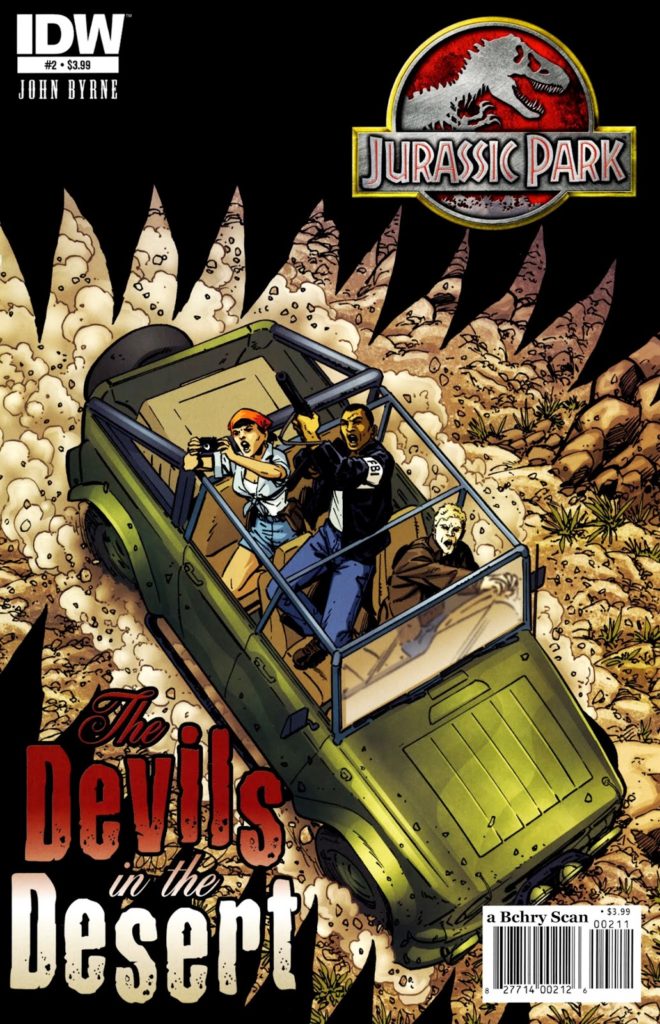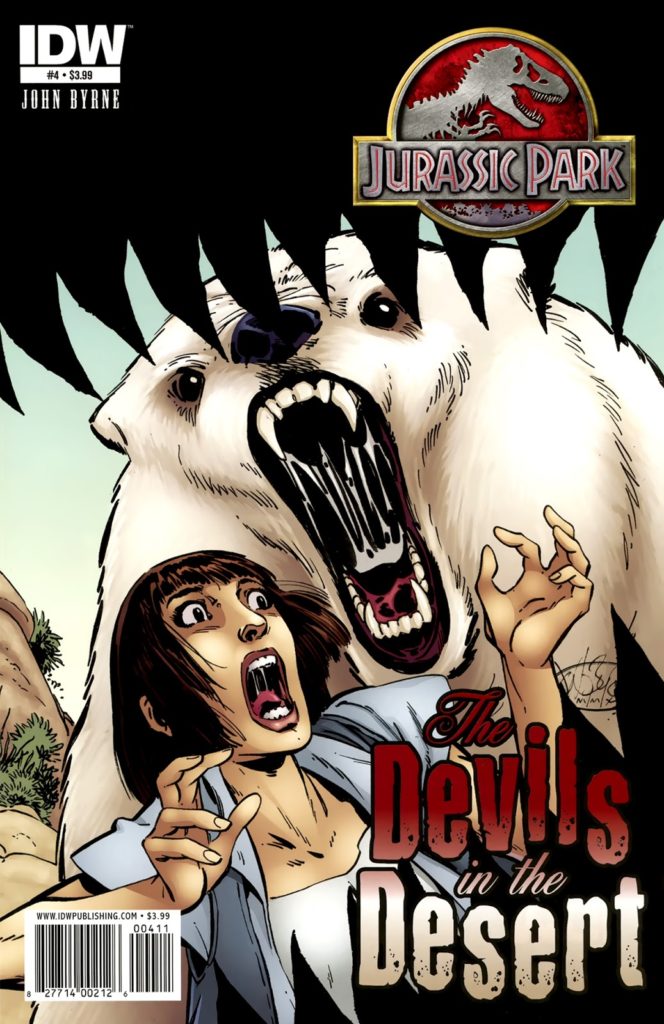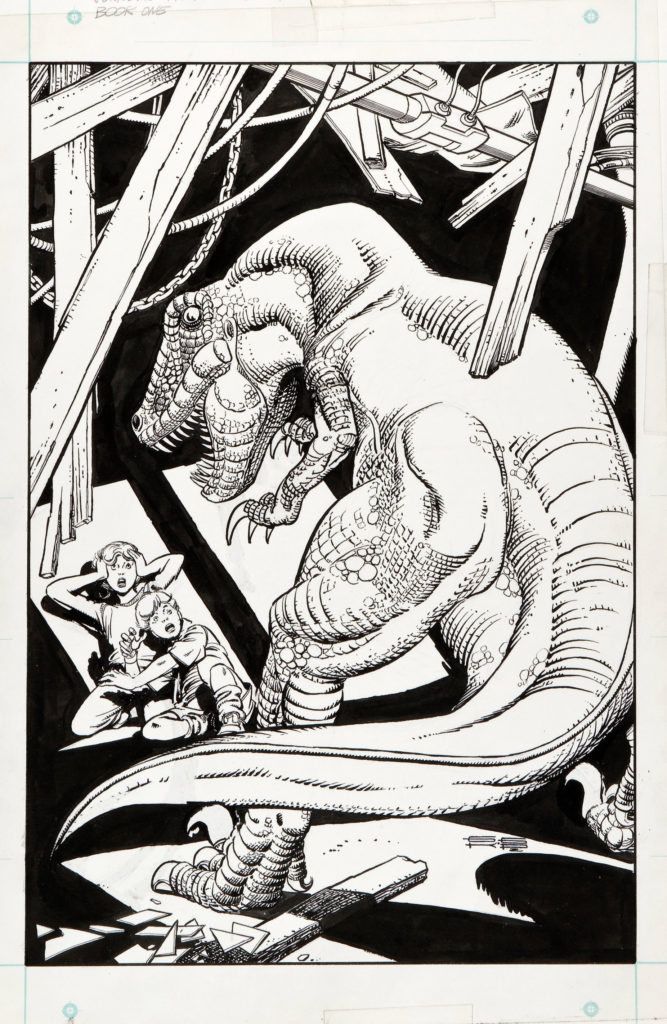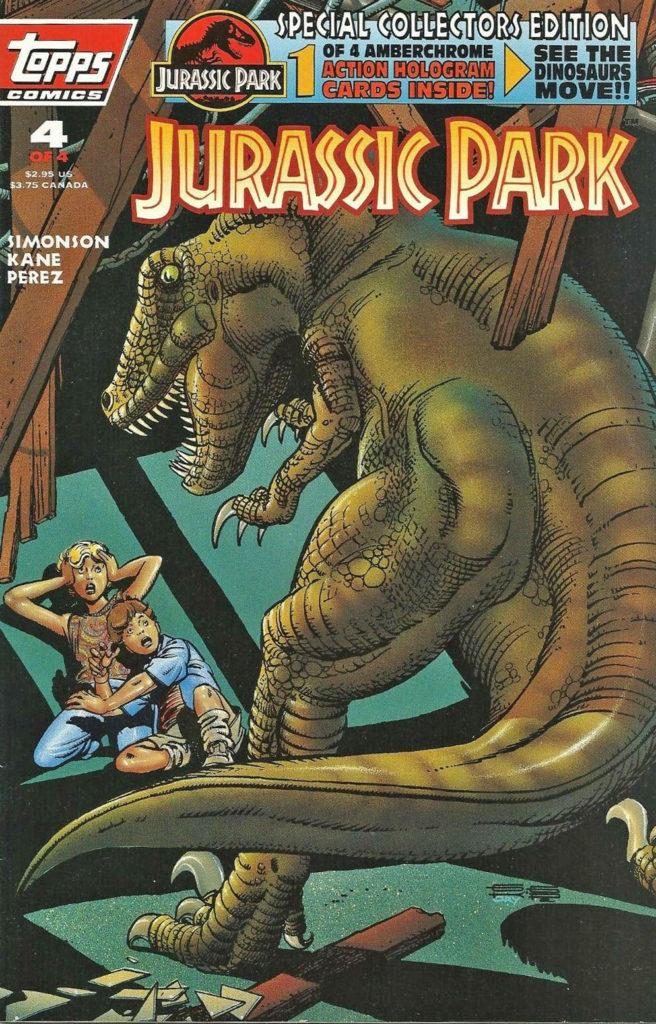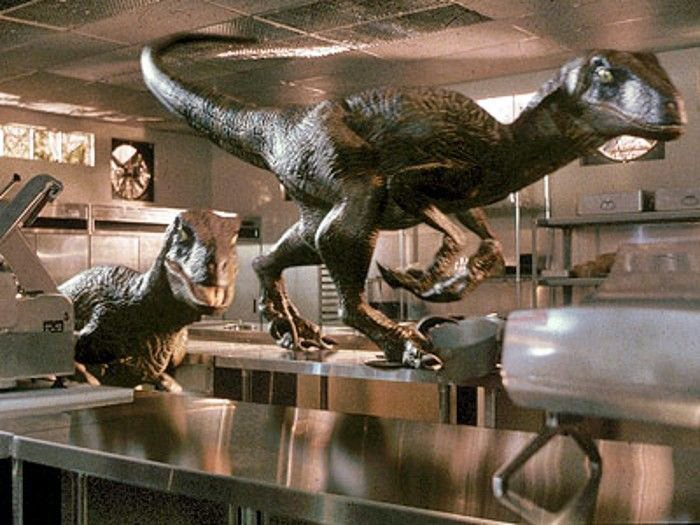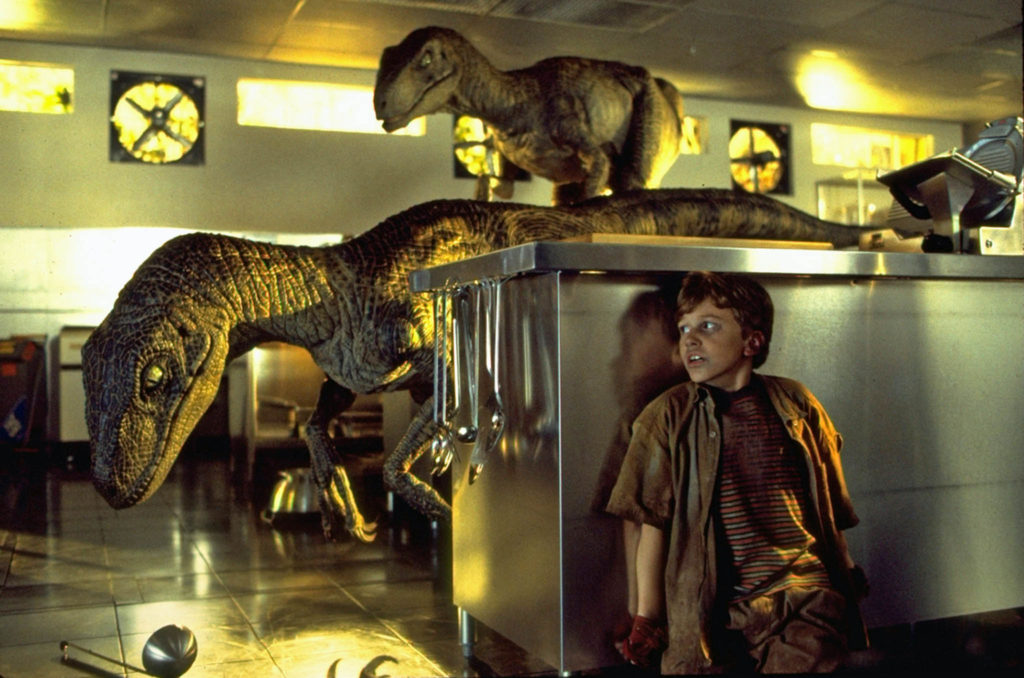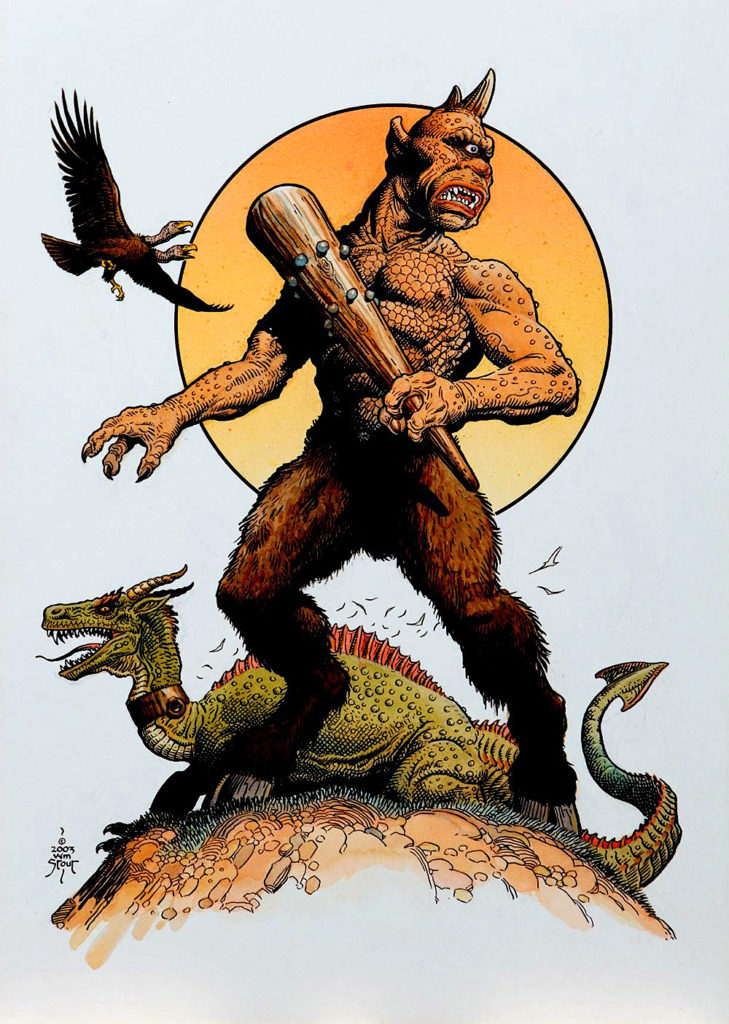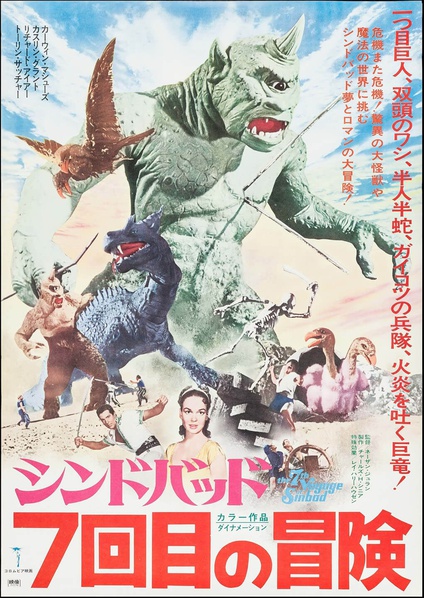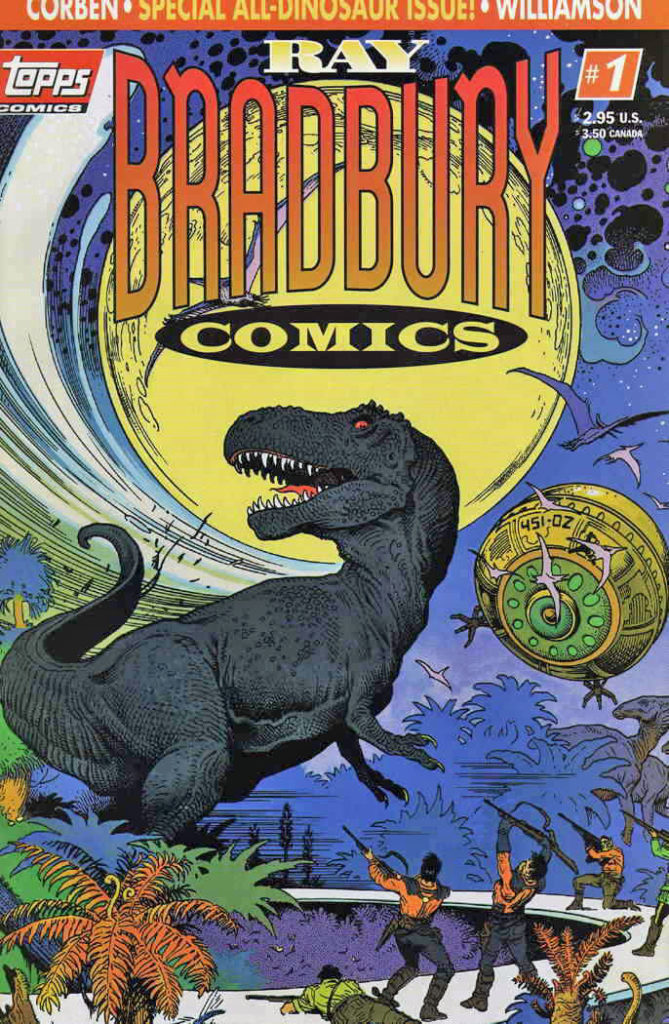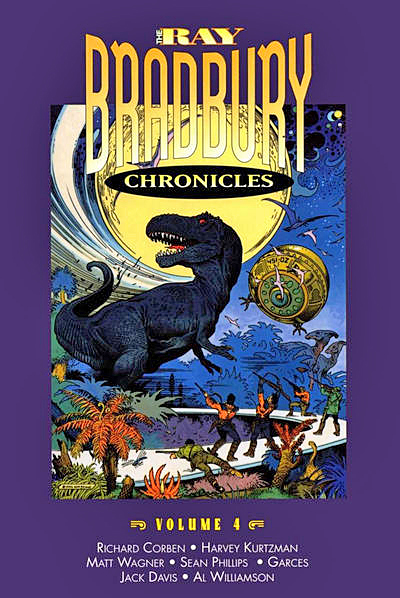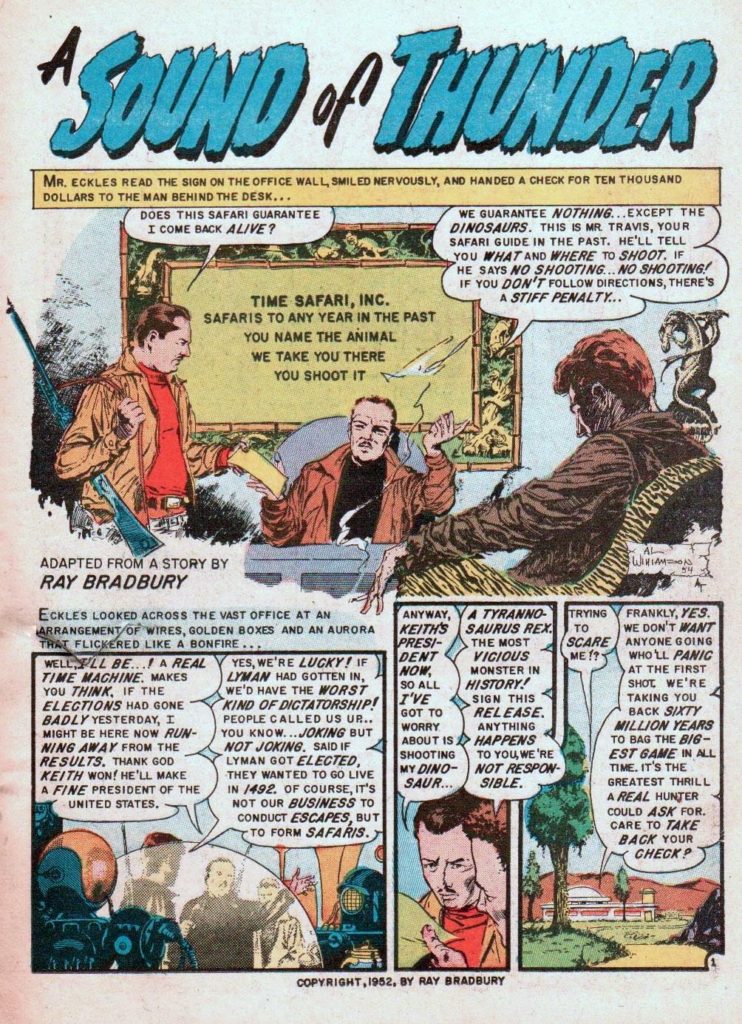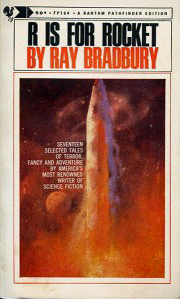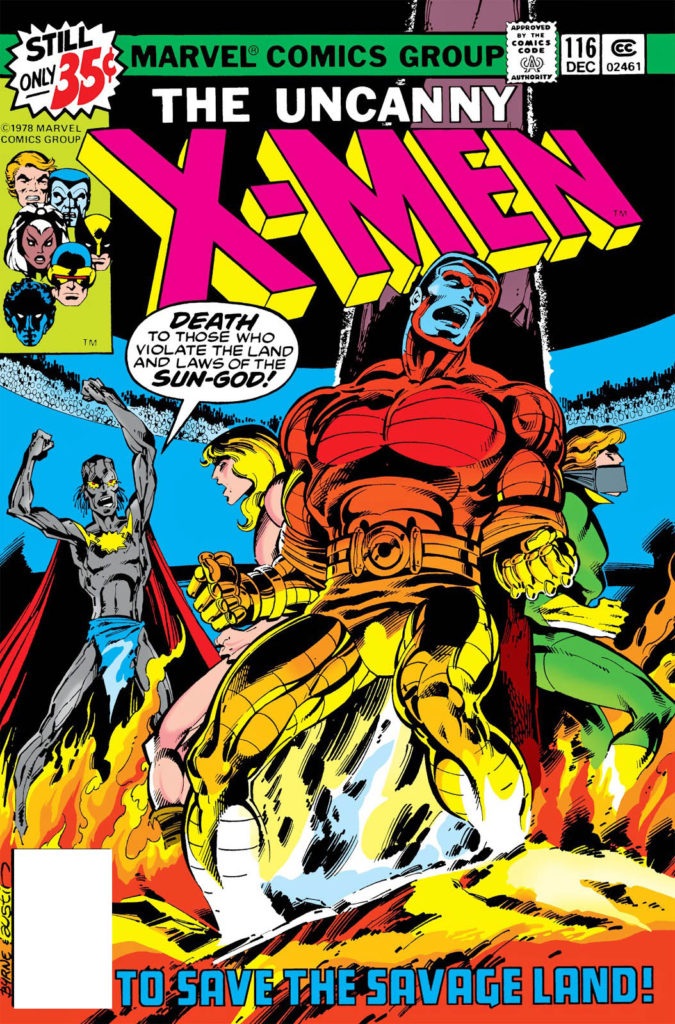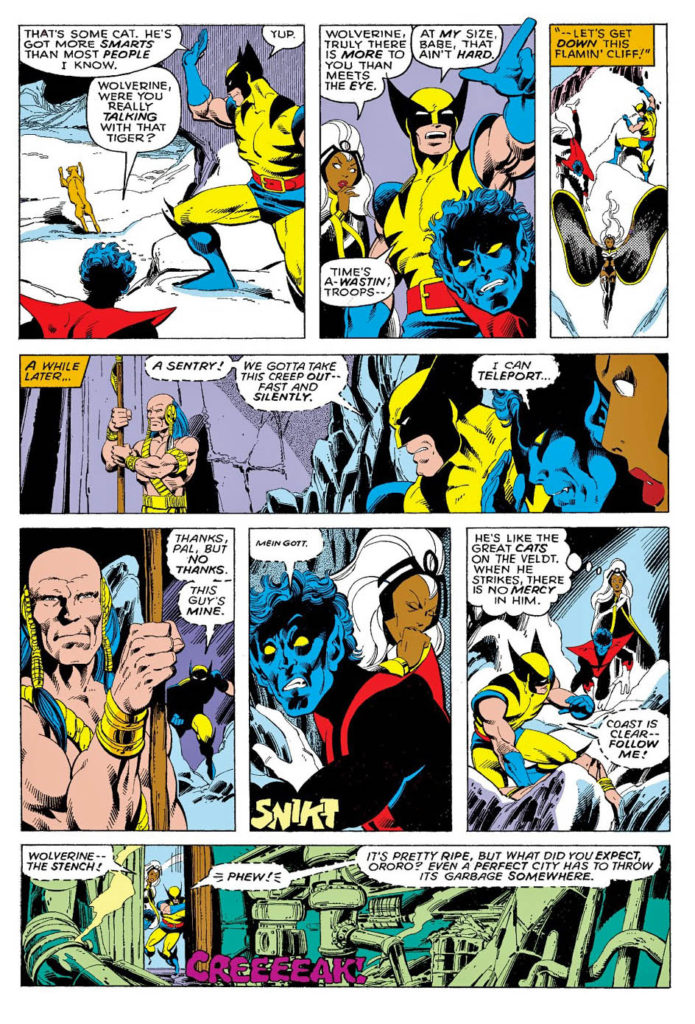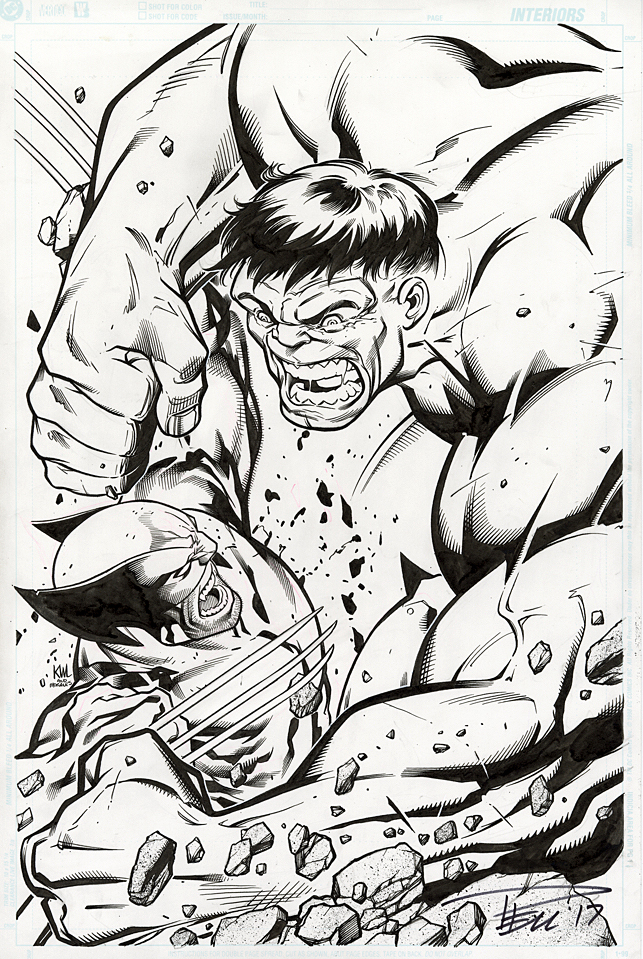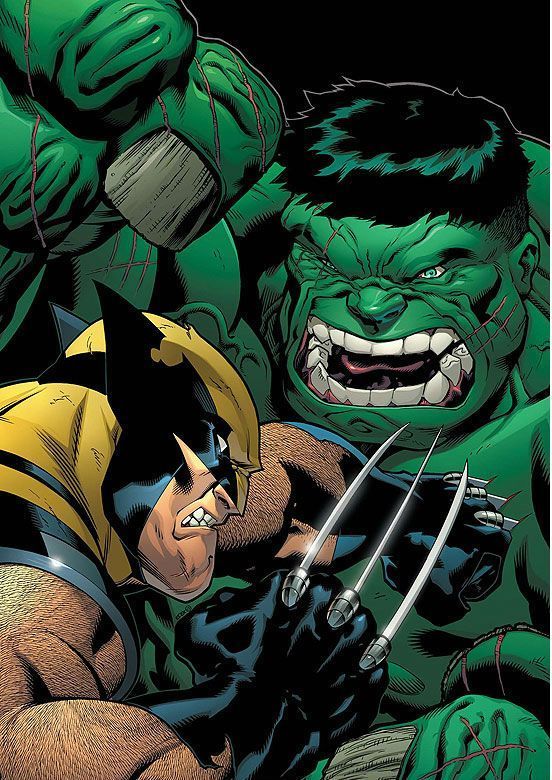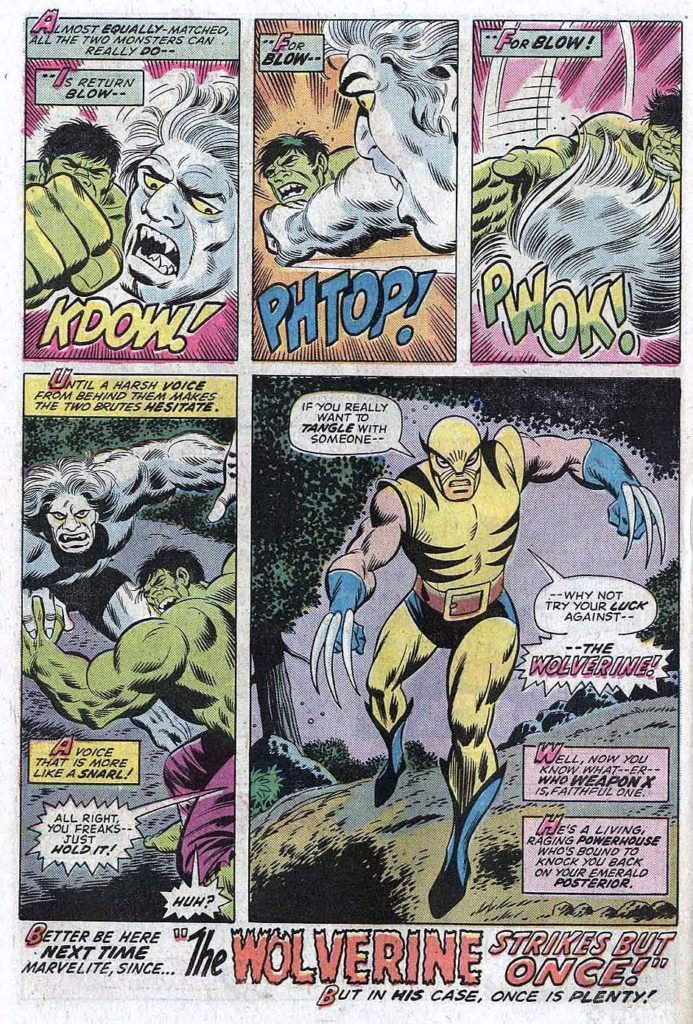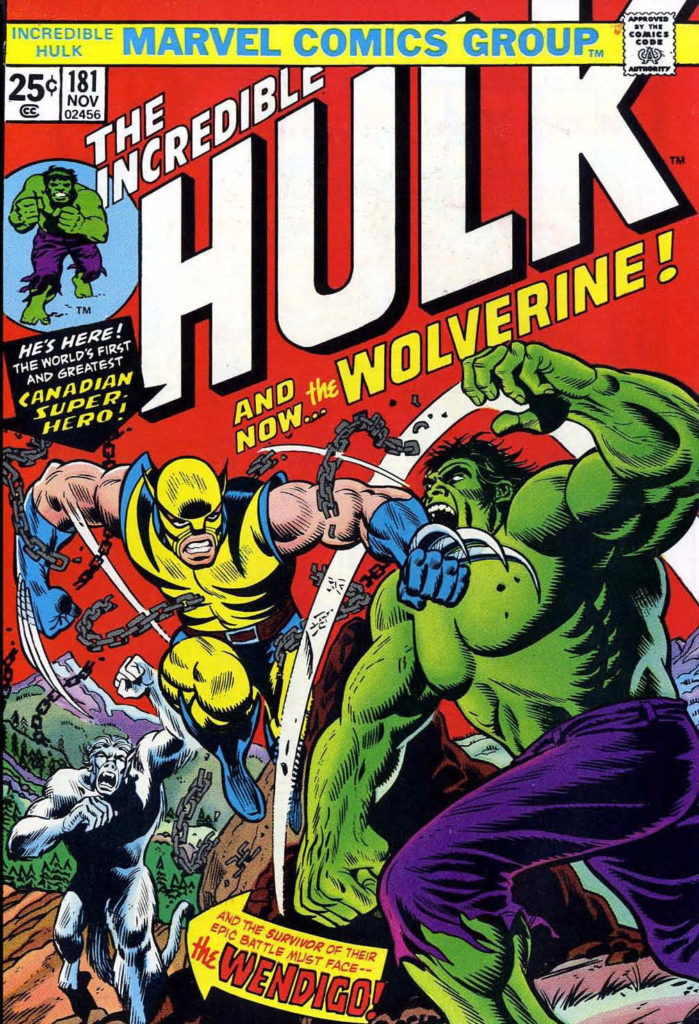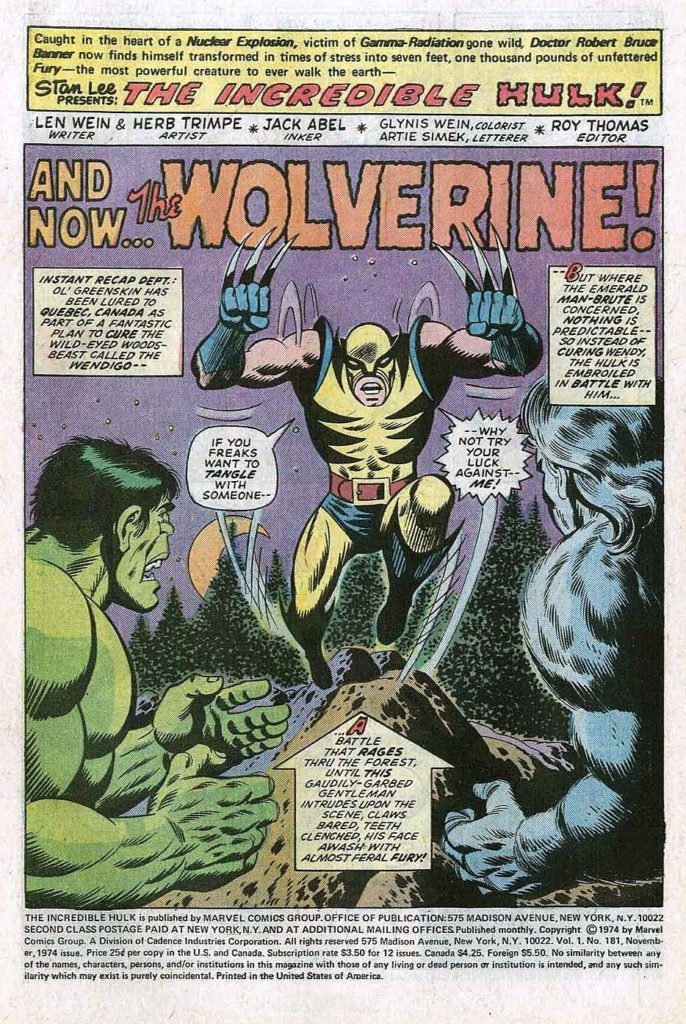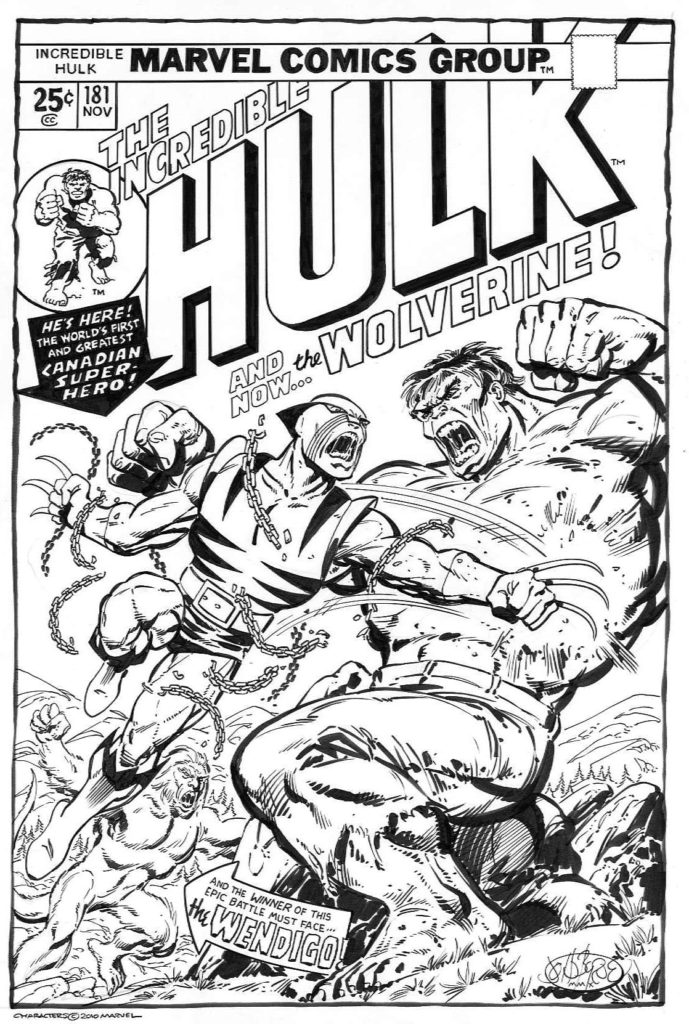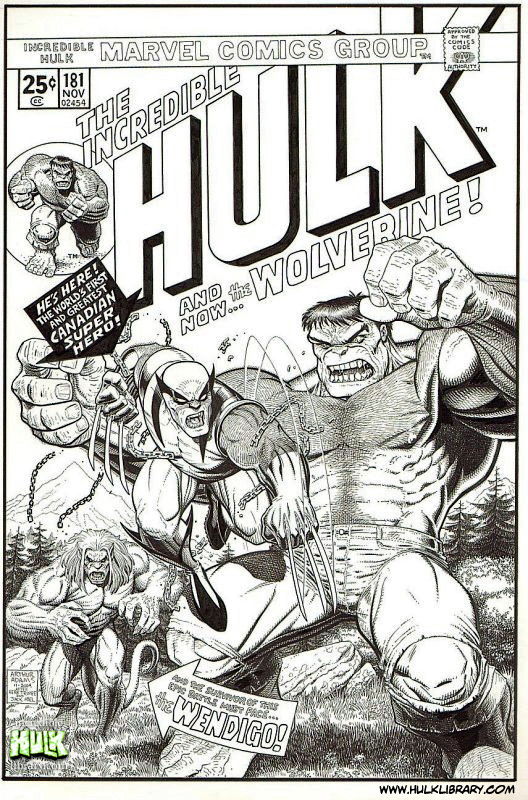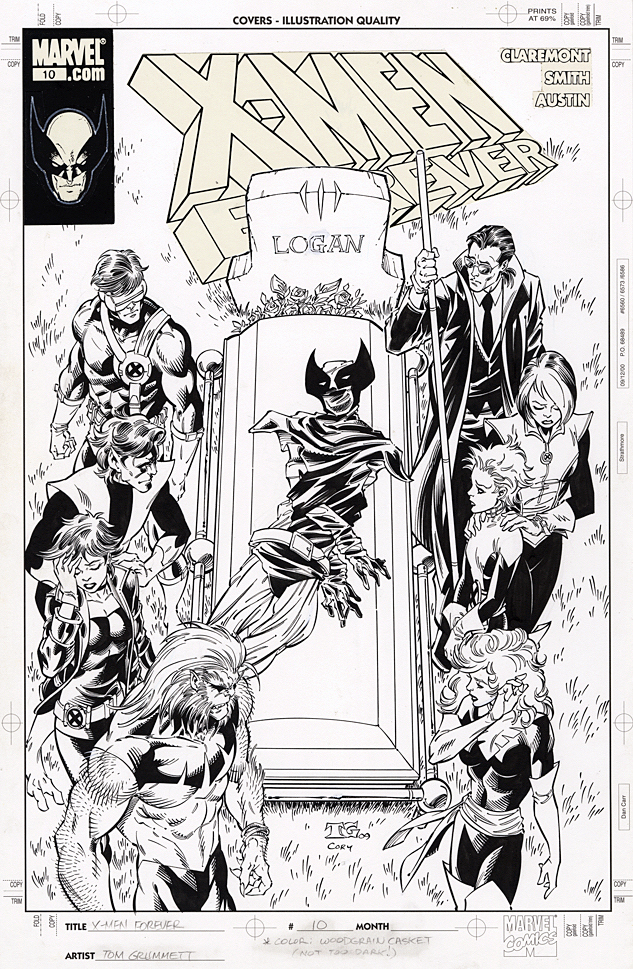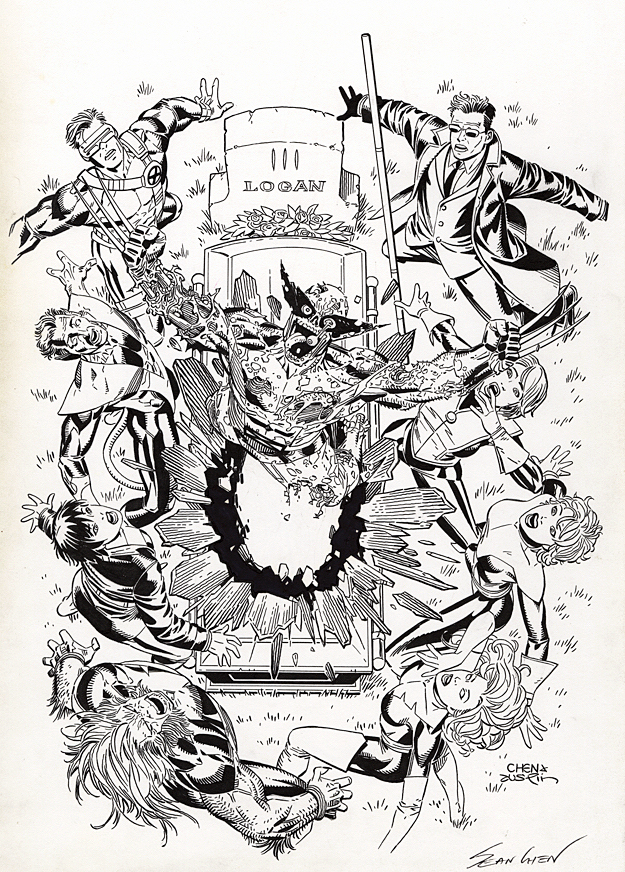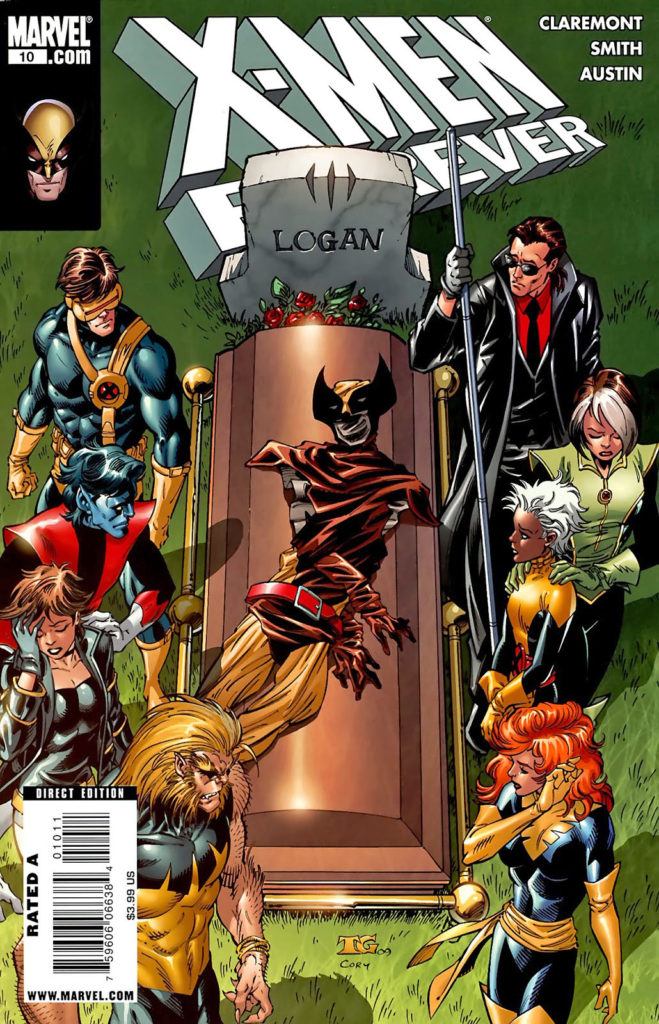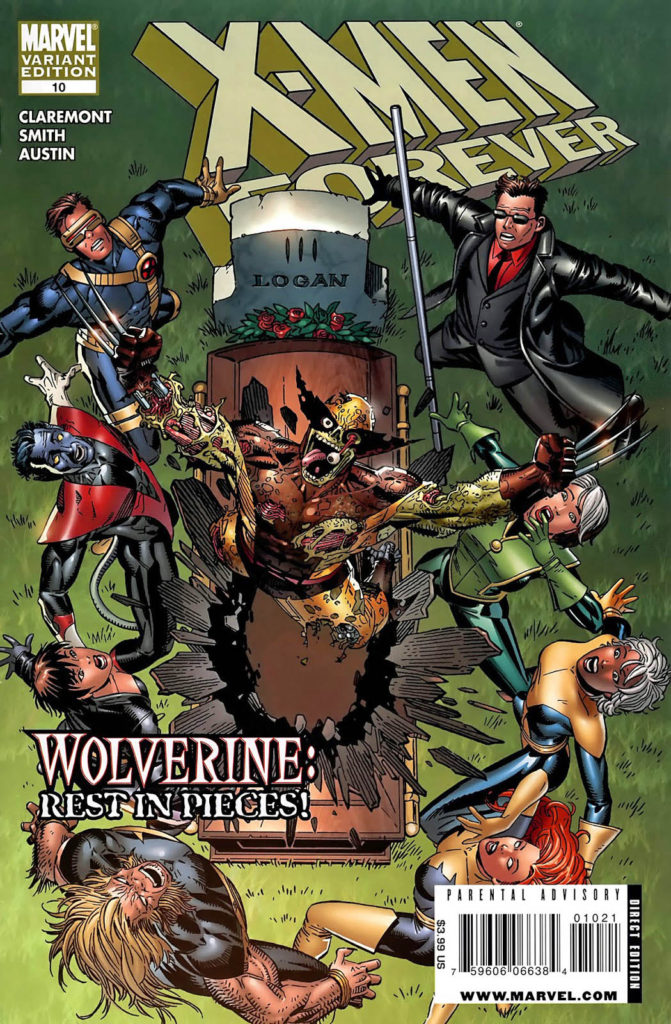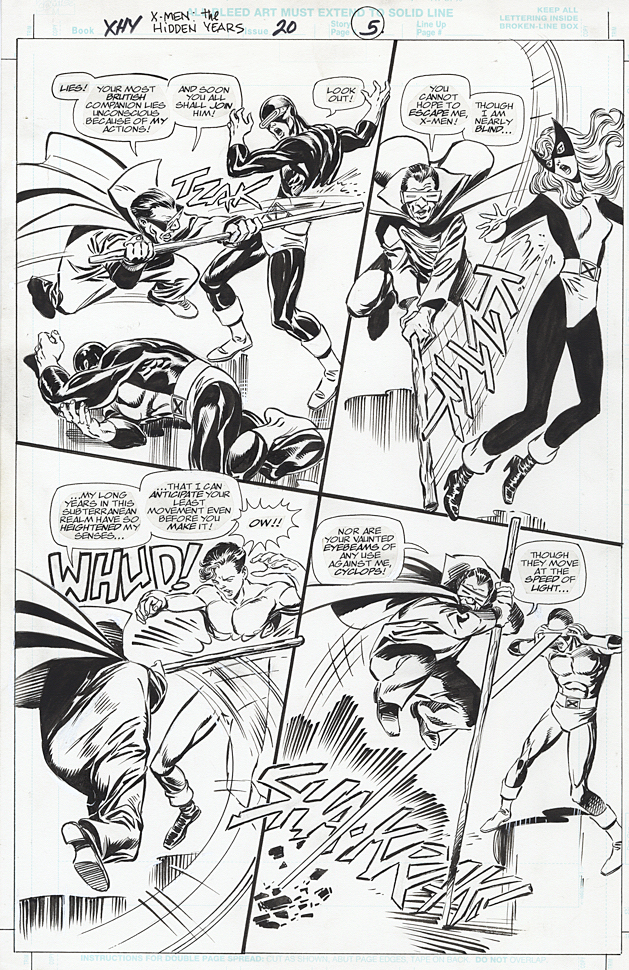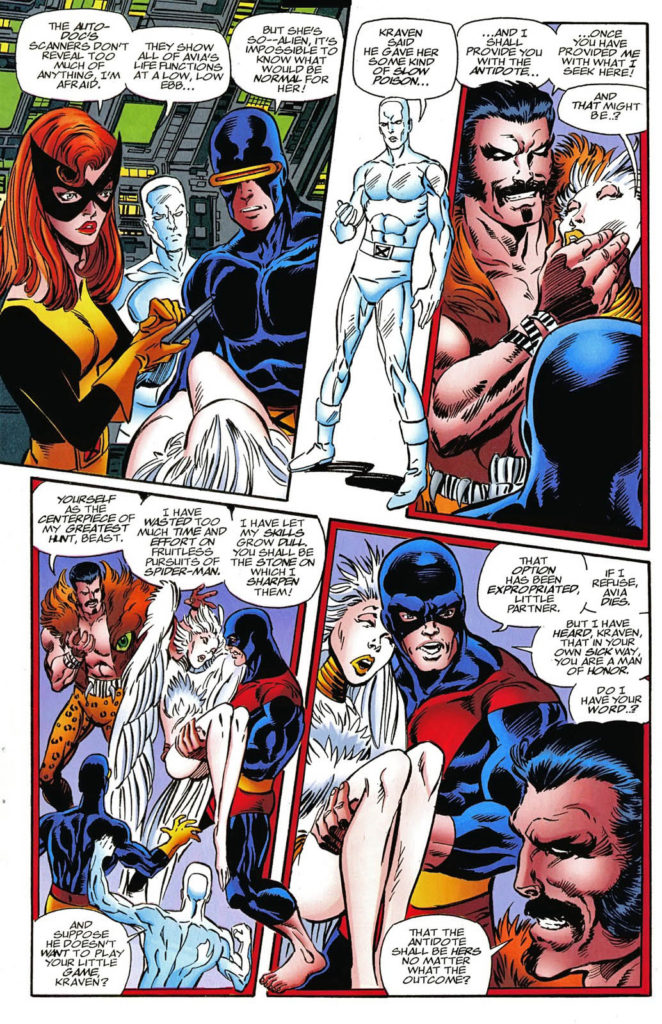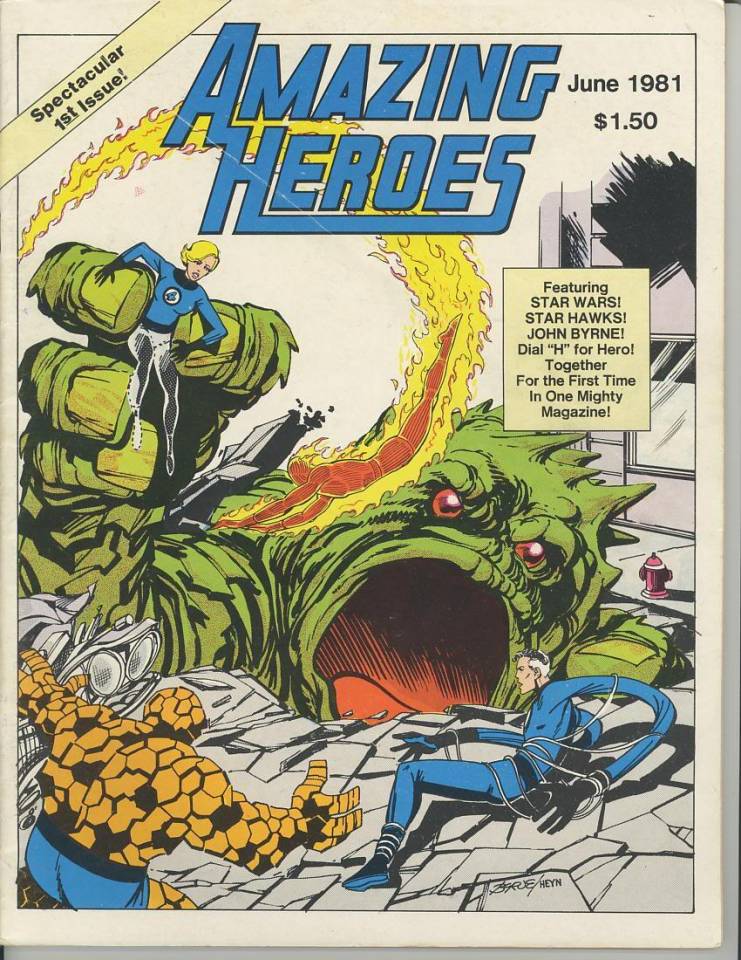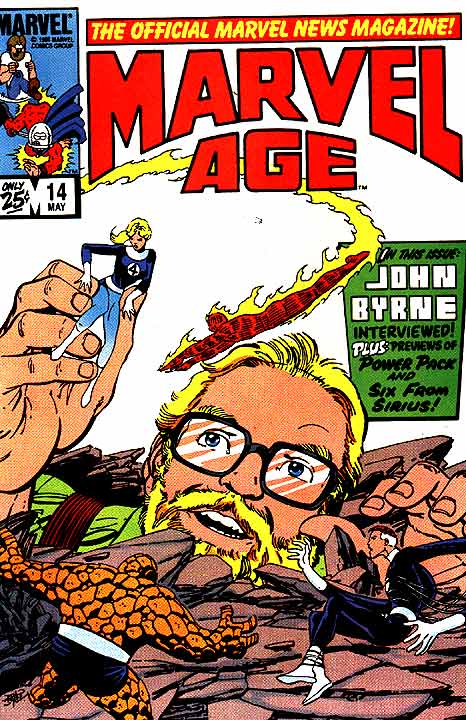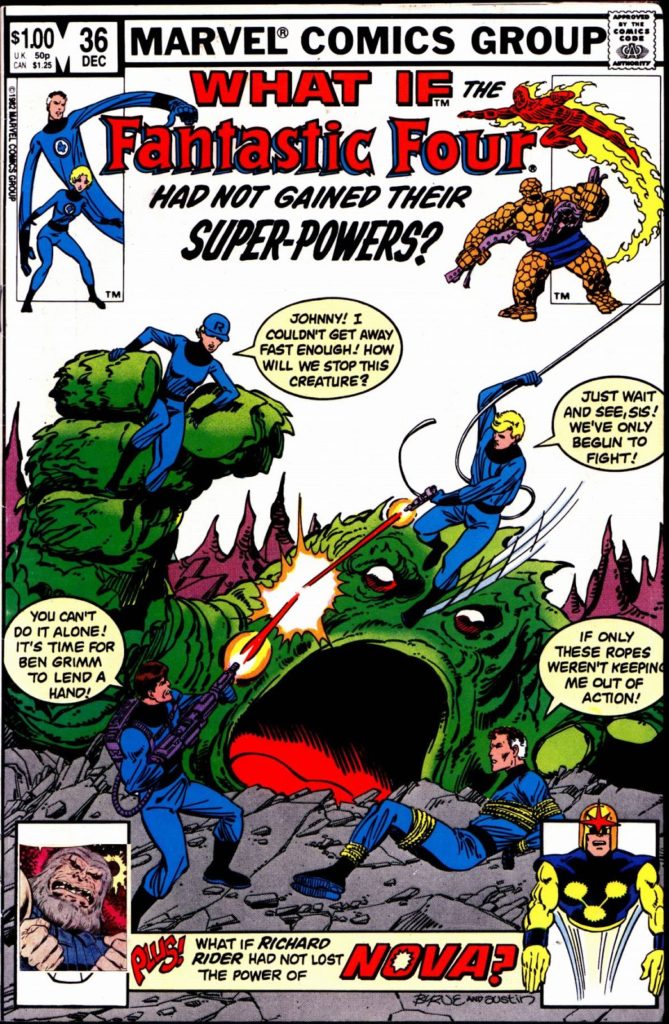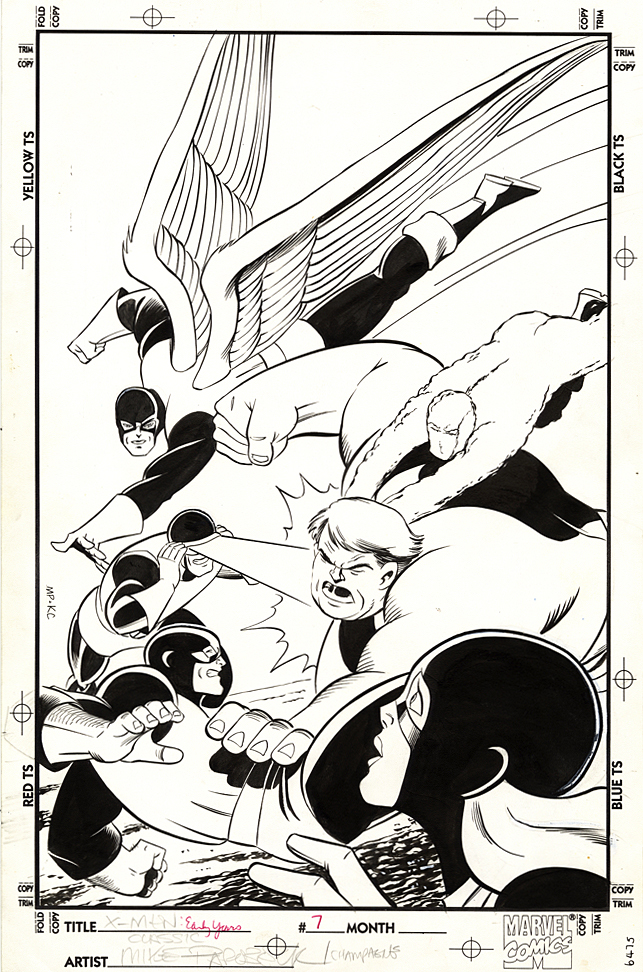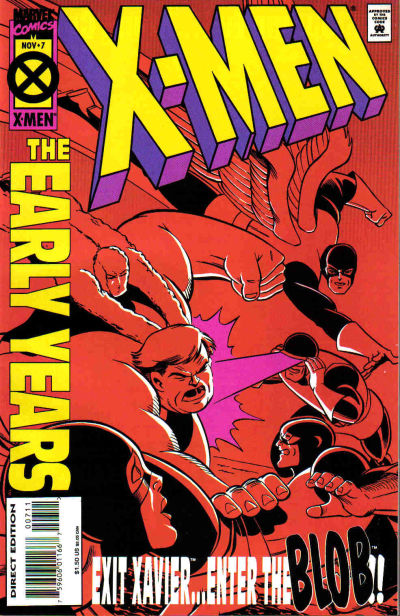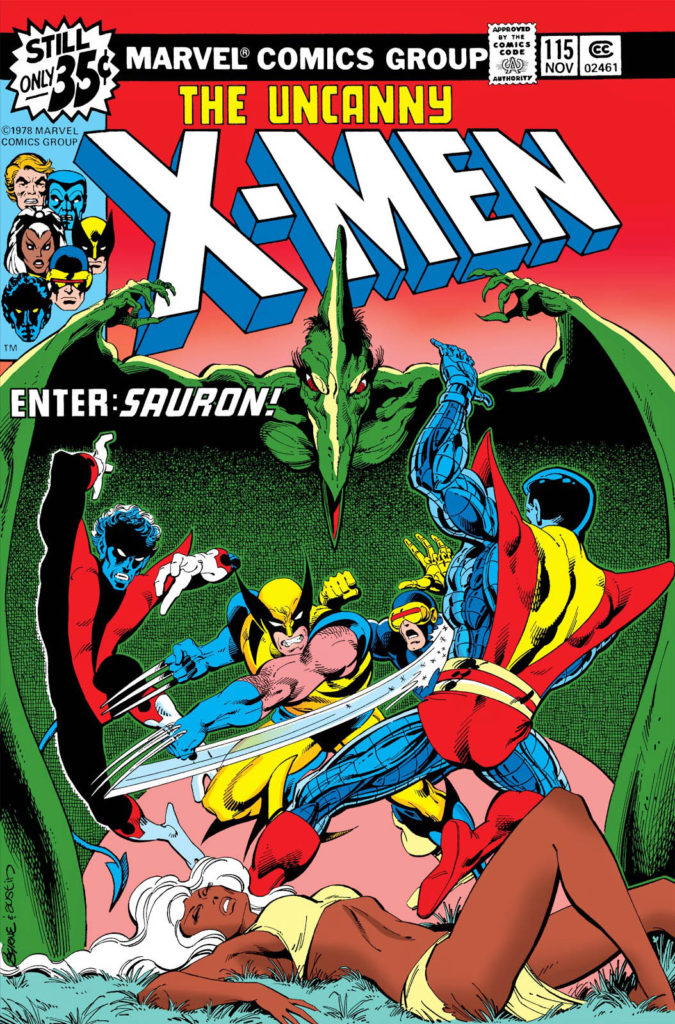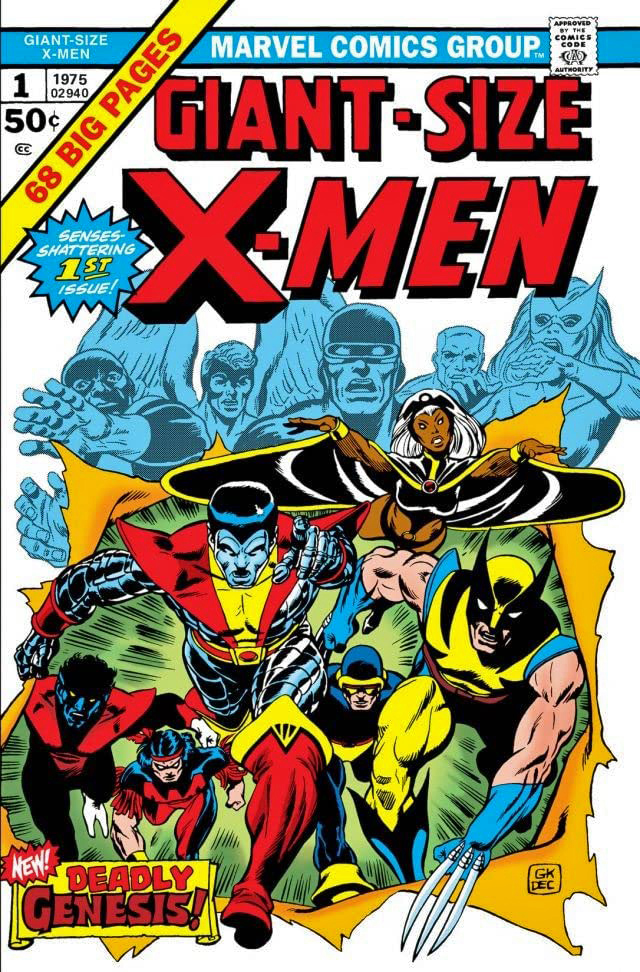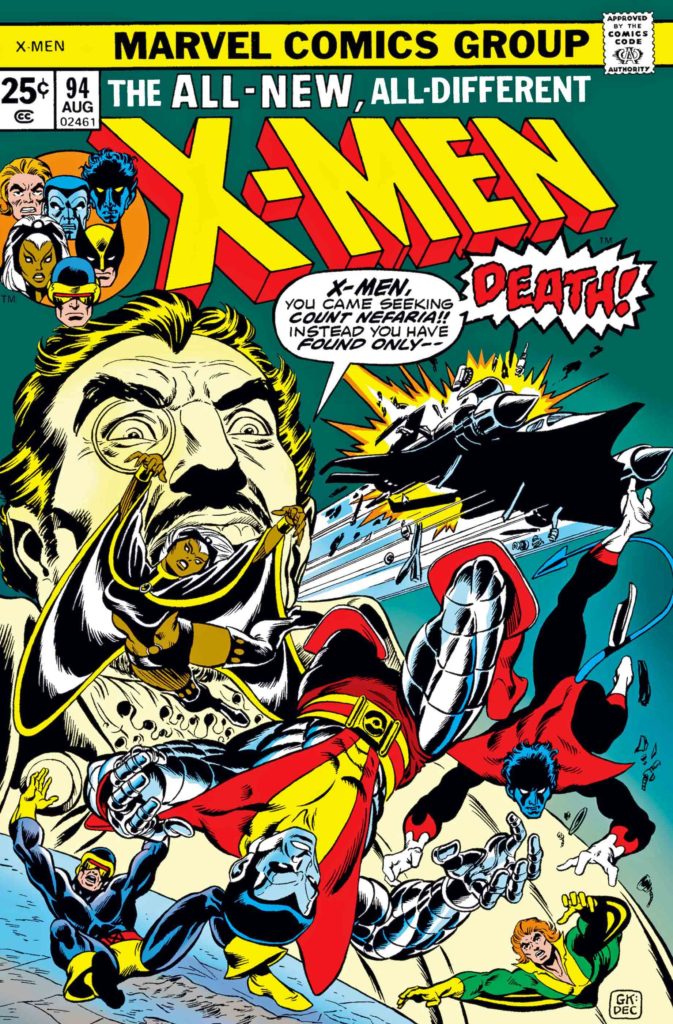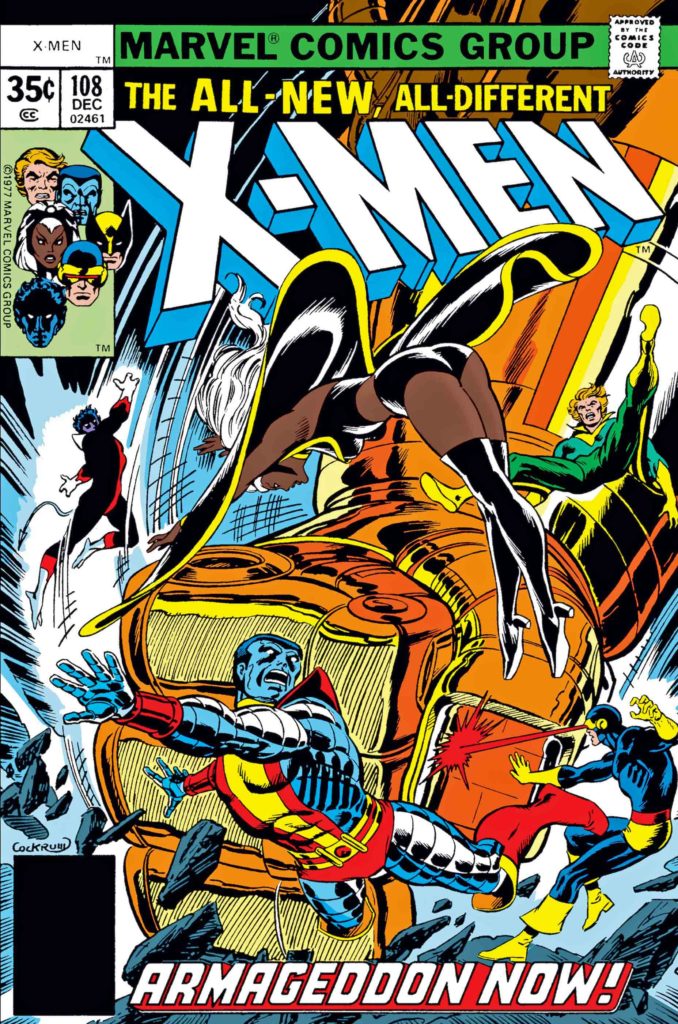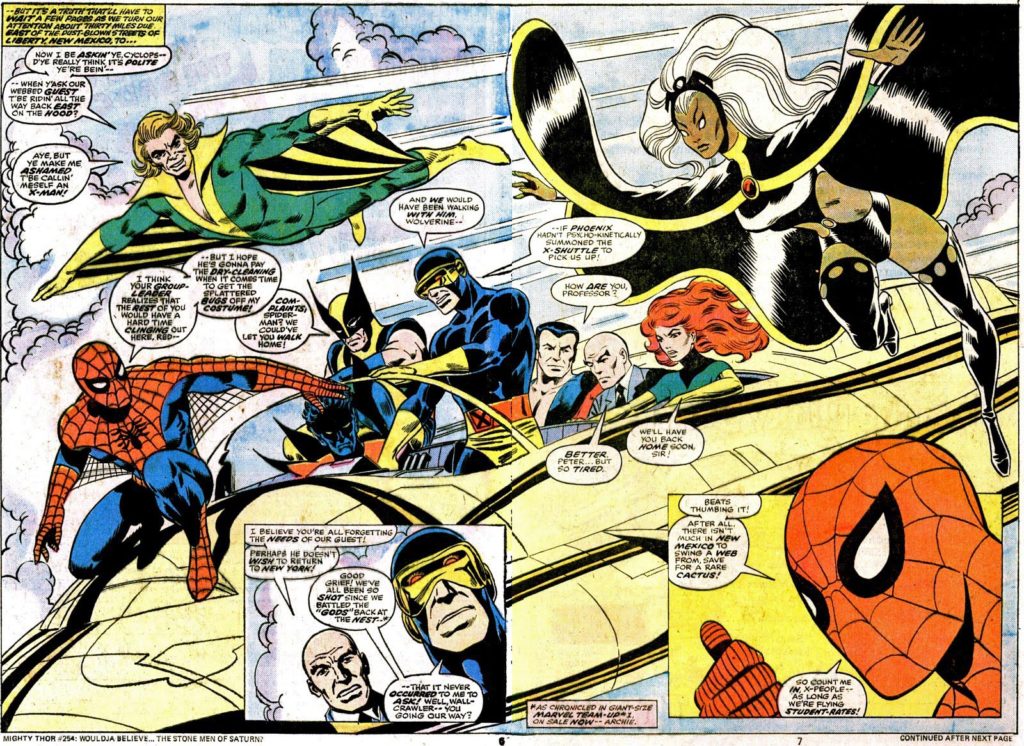John Byrne — “Gronk”
Jurassic Park: The Devils in the Desert #1, January 2011
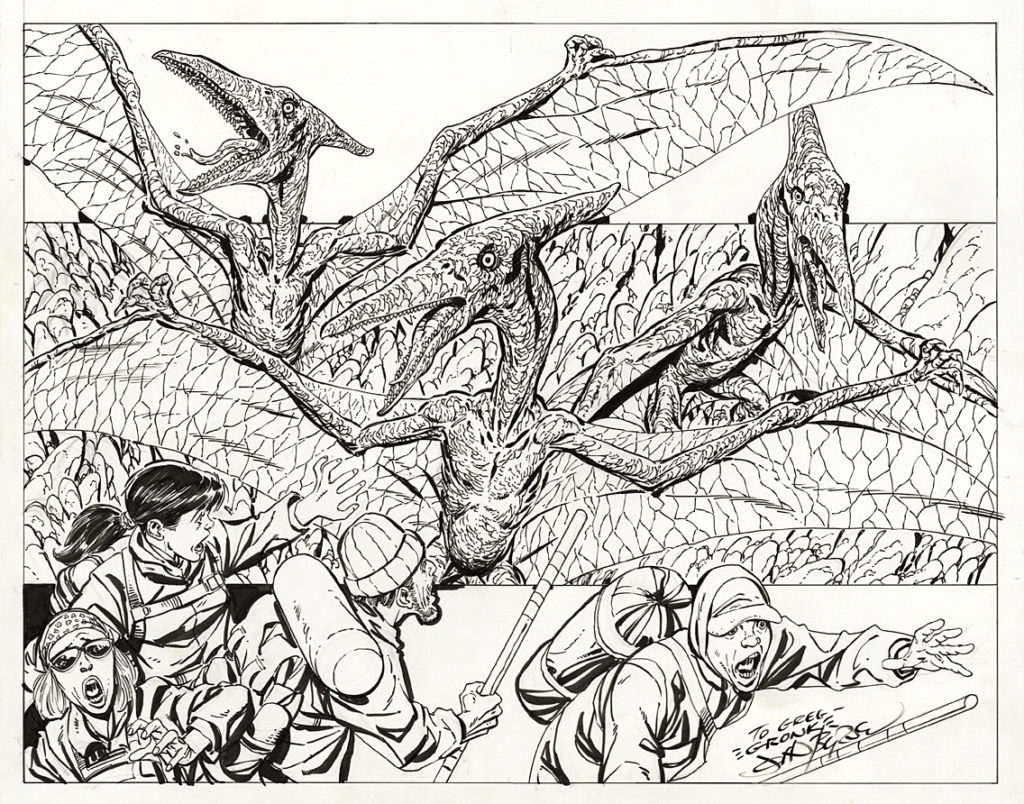
I have no memory of how I acquired a few pieces of art. A chance dealer transaction at a convention perhaps … or possibly a last minute sweetener in a trade? Too much art probably, too many years definitely, and as they say…. hard drive almost full.
But this art’s provenance I remember very well.
NYCC about 5 years ago. I had heard a lot about John Byrne’s house and all the various art collectibles that made up some of the décor, but hadn’t had a chance to get up to the wilds of Connecticut to check it out.
This time I was determined. So, one rainy day at the end of the convention day, Chris Ryall and I trudged our way through monsoon-like rain (no exaggeration) to the train station, missed our connection, but eventually made it up to John’s town. After a nice Chinese meal, we headed back to John’s house.
It was everything as described. Great collectibles and memorabilia, and some great art hanging in his studio by comic book legends John admired. (No surprise, lots of Jack Kirby.)
Chris had already a direct working relationship with John, and in fact had been to his house previously. But I had actually not seen John since the early 90s, and he had no memory of our meeting, nor should he.
As many colleagues can share, John can be reserved at times. Regardless, he was gracious to his publisher, and he definitely warmed up a bit as we discussed art in detail while I enjoyed the tour.
At the end of the night, He pointed us to his flat files of art and told us to each take something. These file were a potpourri of recent projects, pieces he had yet to give to his art representative Jim Warden to sell for him.
Chris found a page from DC’s OMAC series that John was especially proud of. I was a bit more interested in something that we had published at IDW, and after some deep digging, I came up with this great Jurassic Park double-page spread from the mini-series John created for us.
He was delighted that I admired it, and I, of course, was delighted with his generosity. It is a great piece, and to date, I walk past it every day and smile. Permanent collection, for certain.
Getting it back to California from New York wasn’t easy, but that’s a story for another day.
Thanks again, JB!



